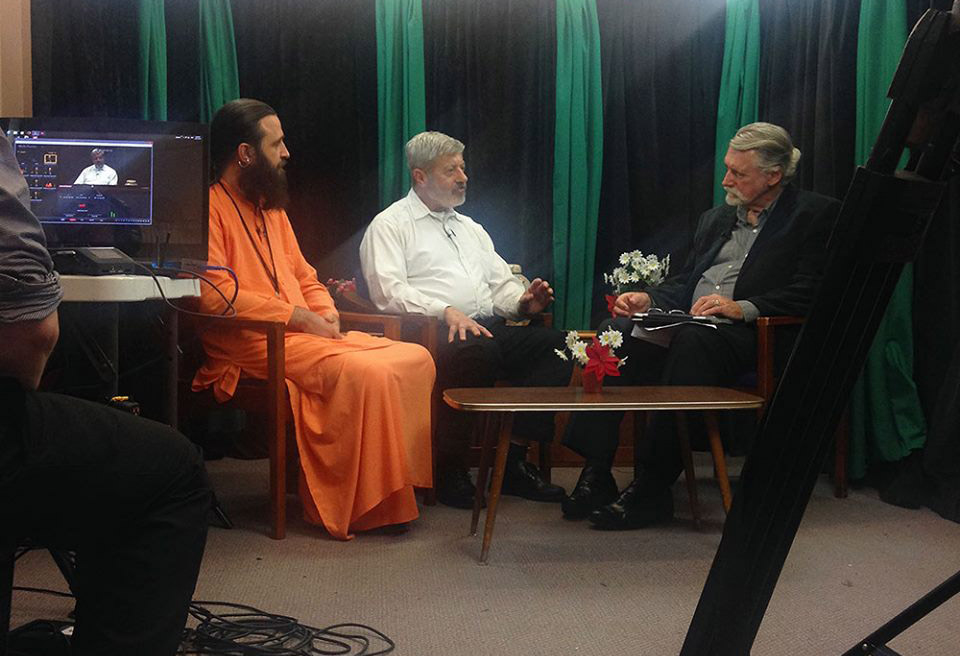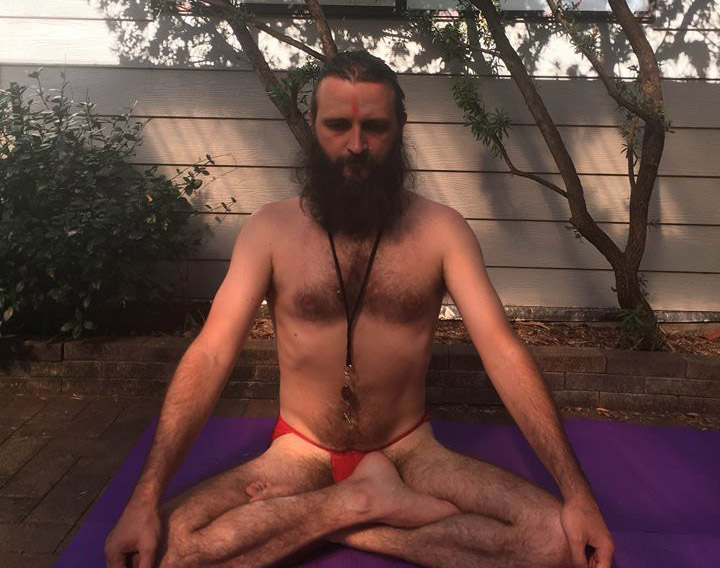Despite the fact that some traditions criticise methods of other sampradāya, sometimes it happens, however, that they themselves utilise them. For example, Abhinavagupta and others criticised Patañjali’s methods. Even though you can often come across the usage of methods of yoga in Kaśmir Śaivism and other tantric traditions, they are actually considered there as an integral part of tantra. In the same way as tantra, they are supporting elements on the path of yoga. I can cite a simple example of such quotations from the description of several techniques from Vijñāna Bhairava Tantra (VBT), which were commented by Śivopadhyaya. In one part, he explains a method from VBT quoting Patañjali, and in another he quotes Viveka-mārtaṇḍa of Gorakśanāth.
सर्वस्रोतोनिबन्धेन प्राणशक्त्योर्ध्वया शनैः |
पिपीलस्पर्शवेलायाम् प्रथते परमं सुखम् || ६७ ||
sarvasrotonibandhena prāṇaśaktyordhvayā śanaiḥ |
pipīlasparśavelāyām prathate paramaṁ sukham || 67 ||
By blocking all channels (jñānendriyas), the force of prāṇa slowly goes upwards. Then there is a sensation like the motion of an ant, and it comes the highest state of euphoria.
First of all, it is clear that it is a description of yoni-mudrā (or ṣaṇmukhi-mudrā). Also, there is an interesting description of kuṇḍalinī movement, which is characterised as pipīlikā-calana (like the motion of an ant) in Nātha texts. That could often be found in Nātha texts in the description of Śakti uprising, in addition to some other motions like vihaṅgama (bird), sarpa (snake) etc. Furthermore, Śivopadhyaya, in his comments to this technique quotes Patañjali, where he defines prāṇāyāma.
.बाह्याभ्यन्तरस्तम्भवृित्तः देशकालसङ्ख्यािभः पिरदृष्टो दीघर्सूक्ष्मः॥५०॥
bāhyābhyantarastambhavṛttirdeśakālasaṅkhyābhiḥ paridṛṣṭo dīrghasūkṣmaḥ ॥ 50॥
The fluctuations of prāṇa could be outward and inward (exhales and inhales), it could also come to a standstill (of breathing). It should be observed, that this process would be elongating, subtle, happens according to time, place and quantity.
Also, Śivopadhyaya cites sutra 49, where Patañjali defines prāṇāyāma as a cessation (vicchedaḥ) of inhales and exhales (śvāsapraśvāsa). Although the term ‘viccheda’ could indeed be translated like that, I would define it in other way. It could also mean ‘cutting off’, like something that is no longer needed ‘comes off’. If the goal of prāṇāyāma is calming of consciousness and prāṇa (with which it’s connected), than it is exactly ‘cutting off’ prāṇa–vṛtti and citta–vṛtti. But, it is actually happening in a natural way with the involvement in the process of proper contemplation. Consciousness, being agitated by the sensual experience is unable to calm down, it is fragmented. Only when the practise enables an involvement in higher orientations and higher dimension, it subsides and everything in excess ‘comes off’, ‘cuts off’ by itself. It happens as at the level of sensual perception, as well as of prāṇa and mind.
Equally interesting explanation of the quotation from the Viveka-mārtaṇḍa, also the Bhagavadgītā appears in the description of a technique from VBT in the other part of the text:
मध्यजिह्वे स्फारितास्ये मध्ये निक्षिप्य चेतनाम् |
होच्चारं मनसा कुर्वंस् ततः शान्ते प्रलीयते || ८१ ||
madhyajihve sphāritāsye madhye nikṣipya cetanām |
hoccāraṁ manasā kurvaṁs tataḥ śānte pralīyate || 81 ||
With the middle of the tongue (it is the tip, if you look at it from the particular angle), pointed in the centre of something that is widely open (the head area – ‘ākāśa’), you should mentally recite the uprising sound ‘ha’, dissolving your mind in calm.
Śivopadhyaya quotes this śloka:
कपालकुहरे जिह्वा प्रविष्टा विपरीतगा|भ्रुवोरन्तर्गता दृष्टिर्मुद्रा भवति खेचरी ॥
kapālakuhare jihvā praviṣṭā viparītagā|bhruvorantargatā dṛṣṭirmudrā bhavati khecarī ॥
When the tongue points backwards and enters the cavity of skull, and the look is directed between the eyebrows – it is khecarī-mudrā.
Śivopadhyaya points out that it is from the Viveka-mārtaṇḍa (68), although you can come across it in many texts – it seems that many authors have copied it from Gorakśanāth. You can see it in the Dhyānabindu Upaniṣad, the Yogacūḍāmaṇi Upaniṣad, in the Haṭha Yoga Pradīpikā, the Gheraṇḍa Saṁhitā etc. It’s quite obvious that Śivopadhyaya implies khecarī-mudrā, which is known in haṭha–yoga in particular, in spite of the fact that in Kaśmir Śaivism it is also known as the practise performed inside consciousness. It is clear, that in India, some masters could claim that practises from different traditions cannot be mixed, but other gurus boldly mixes them and see their interconnection. I incline towards the latter approach. It is interesting that Śivopadhyaya quotes śloka from the Bhagavadgītā while commenting this śloka from VBT:
स्पशार्न्कृत्वा बिहबार्ह्यांश्चक्षुश्चैवान्तरे भ्रुवोः।
प्राणापानौ समौ कृत्वा नासाभ्यन्तरचािरणौ ।।५.२७।।
sparśānkṛtvā bahirbāhyāṃścakṣuścaivāntare bhruvoḥ।
prāṇāpānau samau kṛtvā nāsābhyantaracāriṇau ।। 5.27।।
Leaving with external (world) the tangency (of consciousness), concentrating the look between the eyebrows, a yogin balances prāṇa and apāna.
This technique is known in haṭha–yoga as bhrūmadhya–dṛṣṭi or śāmbhavī-mudrā. It is for a reason, that it is often associated with sādhana of khecarī–mudrā. However, in Kaśmir Śaivism, this practise means the way to achieve pratimilana–samādhi, or bhairavī–mudrā (the union of internal and external spaces), that is often acquired through the practise of maithuna in kaula ritual. Then in accord with the Tantrāloka and the Mahārtha Mañjarī (the text which is connected with Gorakśanāth according to nāthas), the sound ‘ha’, which is made during mahākśobha (orgasm) – is the sound of anāhata, which dissolves (laya) the mind. However, it is more likely that in this practise it is implied ‘the internal coition’ of Kuṇḍalinī Śakti, upraised to Śiva in sahasrāra cakra, where Śakti was released in the space above the crown of the head.
All these methods, actually, could become the one unified process for those who don’t stuck in modern yoga, where everything is being ‘divided’,everyone ‘comes up with something new’ because of the obsession with markets and trade concepts.








